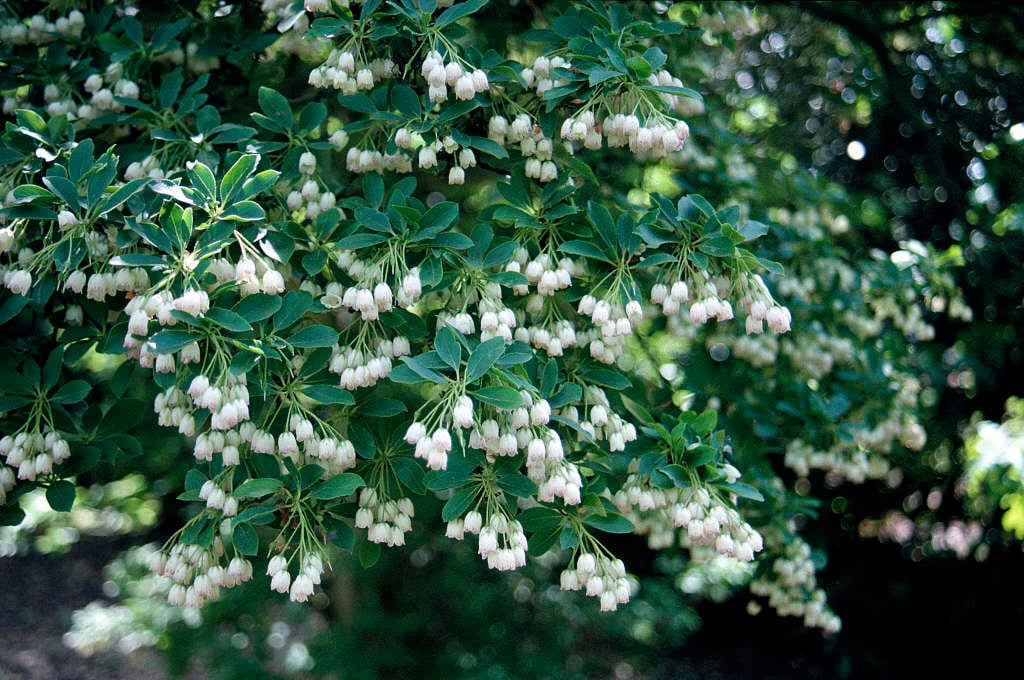Enkianthus campanulatus
redvein enkianthus
A large, upright, deciduous shrub with small, elliptic leaves turning bright red, orange and yellow in autumn. Clusters of small cream or reddish, bell-shaped flowers appear from late spring to mid-summer
Size
Ultimate height
2.5–4 metresTime to ultimate height
20–50 yearsUltimate spread
2.5–4 metresGrowing conditions
Moisture
Moist but well–drained, Well–drainedpH
Acid, NeutralColour & scent
| Stem | Flower | Foliage | Fruit | |
| Spring | Red Cream | Green | ||
|---|---|---|---|---|
| Summer | Green | |||
| Autumn | Red Yellow Orange | |||
| Winter |
Position
- Full sun
- Partial shade
Aspect
North–facing or West–facing or East–facing or South–facing
Exposure
Sheltered Hardiness
H5Botanical details
- Family
- Ericaceae
- Native to GB / Ireland
- No
- Foliage
- Deciduous
- Habit
- Bushy
- Genus
Enkianthus are deciduous shrubs with simple, alternate leaves often colouring brilliantly in autumn, and umbels of racemes of small urn- or bell-shaped flowers in spring or summer
- Name status
Correct
- Plant range
- Japan
How to grow
Cultivation
Grow in well-drained, humus-rich soil in full sun or partial shade
Propagation
Propagate by semi-hardwood cuttings
Suggested planting locations and garden types
- Cottage and informal garden
- City and courtyard gardens
- Patio and container plants
- Coastal
- Gravel garden
- Flower borders and beds
Pruning
Pests
Generally pest-free
Diseases
May be susceptible to honey fungus in gardens where it is present but insufficient data to determine degree of susceptibility
Get involved
The Royal Horticultural Society is the UK’s leading gardening charity. We aim to enrich everyone’s life through plants, and make the UK a greener and more beautiful place.

